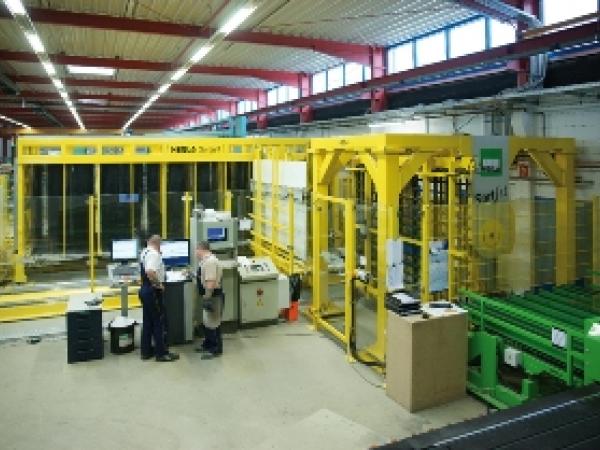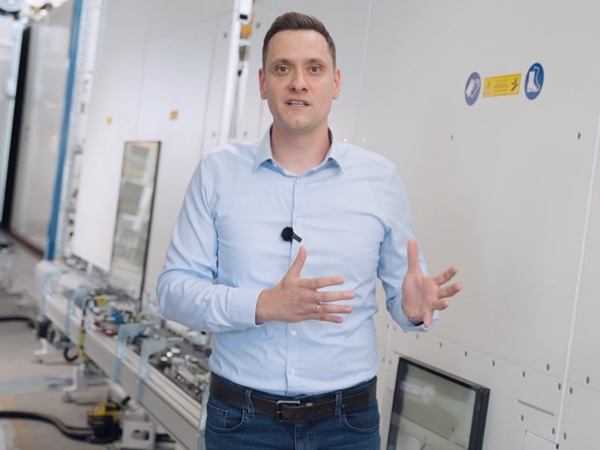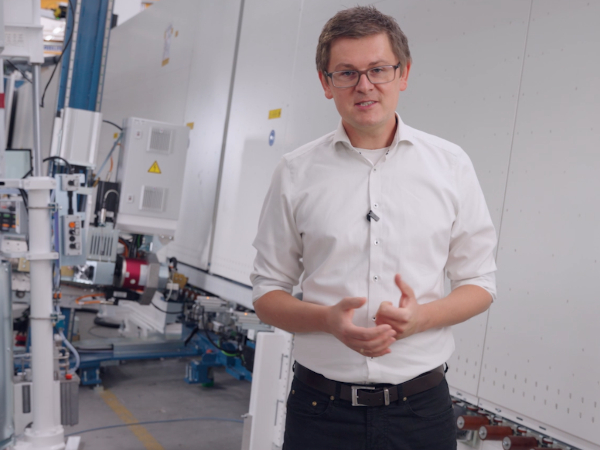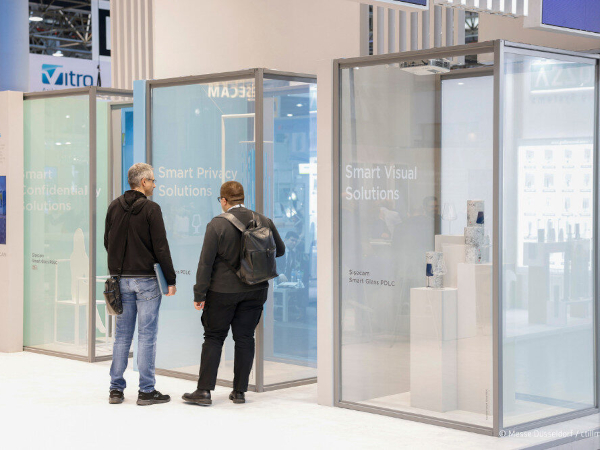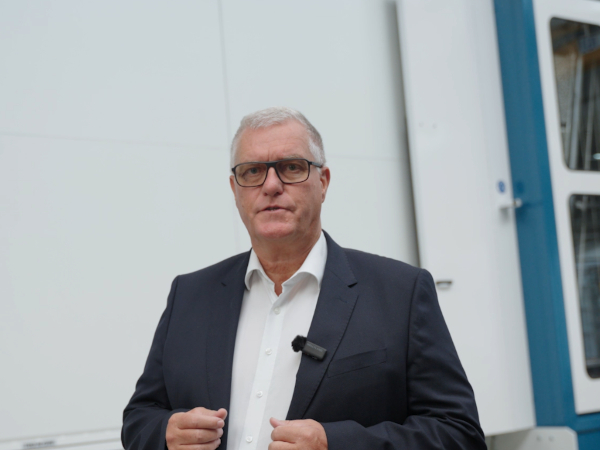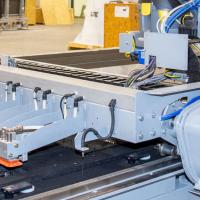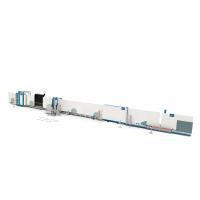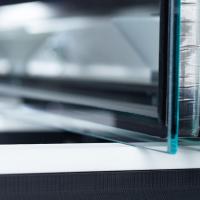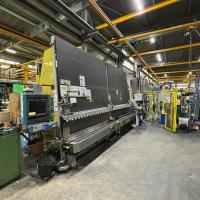October 2004: At glasstec, A+W and HEGLA present to the expert public the first SortJet controlled by the dynamic, online optimisation system DynOpt. For the first time ever, any sequence required can be achieved automatically, with optimum – in an elegant yet compact way. In the summer of 2005, the system goes live at IG producers Wolff+Meier.
April 2012: 13 successful DynOpt installations in Germany and Europe prove that this concept is well accepted throughout the industry – by this year’s glasstec there will be 16 DynOpt installations. With the systems currently being configured, DynOpt enters new dimensions: Some European producers even link several IG lines with several cutting lines online by means of the sorting buffer.
The DynOpt-controlled buffer can real-time manage streams of materials from different cutting technologies which were optimised to achieve maximum yield and releases them again, transformed into the required sequences. Unlike classical optimisation systems, the dynamic real-time optimisa¬tion is constantly active which is why corrections are always possible, in connection with residue plates for instance, for remakes or in order to add rush orders. IG producers who had – albeit grudg¬ingly – come to terms with poor yield due to an increasing number of functional glass, have been able to increase their yield, especially for frequently recurring glass types, thanks to A+W’s dynamic optimisation. Decisive for most of the users however is the improved efficiency due to the constant flow of glass, without the need for manual handling. Andreas Herzog, pilot user of the DynOpt online-solution with a direct link to the production line: „The material flow is more rounded off, there is always glass to be fed into the washer, there is less loss, no sheets are missing. There are much bet¬ter possibilities, and the production flow is much more fluent.“
During the eight years since their conception, dynamic optimisation and machine technology have been constant improved. Main steps were the direct linking of the sorting system to IG lines, the fully automatic synchronising of float and laminated glass streams and, thanks to the latest generation of HEGLA’s SortJet, multiple use of the buffer slots: In connection with the double output shuttle, this supports the production of triple IG optimally.
Along with the increase of automation, the cutting and sorting areas are closely linked with IG pro-duction. Elements in the cutting area directly communicate with the IG line systems such as quality scanners, automatic spacer applicators, and label printers. Whenever the production sequence changes, the material flow is adapted real-time.
Depending on customer requirements, the process can be optimised further: In connection with the A+W packing optimisation for instance, the sequence can be adopted to the direct packing of the IG units. A robot, controlled by the packing optimisation data, loads the units according to the company’s route planning onto the transport racks, in the desired unloading sequence –obeying all technical packing restrictions of course. Such highly automated productions – with one IG line – can be run with just five workers per shift (production scheduling, float cutting, laminated glass cutting, IG production, and packing).
DynOpt – the main benefits for the user
- Improved flow of production – security of supply for the IG line
- Remakes and rush orders can be added easily
- Reduced labour and material costs
- Practically no residue plates in connection with frequently recurring glass types
- Significantly improved yield for laminated glass and rarely used glass types due to the integration of residue plate stores (e.g. HEGLA Remaster)
- Higher customer satisfaction due to shorter delivery times, more delivery reliability, and less com-plaints
- Substantial reduction of scratches, no damages to soft coatings
- No errors regarding the coating position
- Work is made much easier for the workers in the float glass cutting area, and there is less risk for injuries!
Fully automatic cutting and sorting with DynOpt II: HEGLA online sorting system with multiple occu-pancy at Wolff+Meier, Langgöns

A robot, controlled by the A+W packing optimisation data, loads the units according to the com-pany’s route planning onto the transport racks
Info: aw.germany@glaston.net

